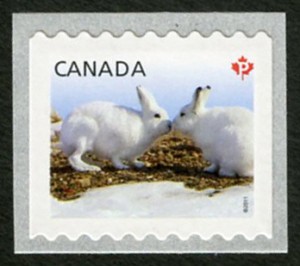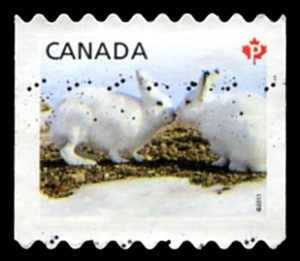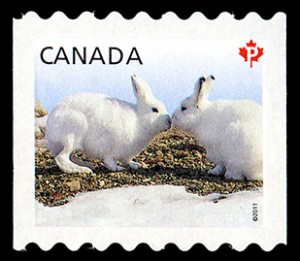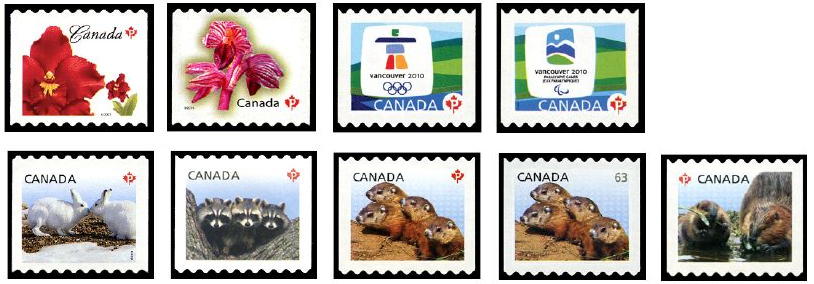A correspondent in Alberta (Mirko Zatka, who quite likely has the best stock of modern Canadian mint varieties around) discovered a new, major die cutting variety this past week.
The Permanent™ Arctic Hare baby wildlife definitive issued January 17, 2011 exists in two formats: a coil of 100 (common) and a roll of 5,000 used by specialized postaging machines (scarce).
The roll of 5,000 is listed in the Unitrade catalogue as Scott 2425. The ‘normal’ variety looks like this (notice that the serpentine die cutting along the top starts with ‘peak’):
Now take a look at this used example:
The serpentine die cutting along the top in this example starts with a ‘valley’. This is a new major die cutting variety (i.e. the die cutting was inverted in relation to the original).
Do not confuse the above ‘roll of 5,000 stamps’ from the very common stamps from coils/rolls of 100 (Scott 2426):
How do you tell the difference between single stamps printed from the coils of 100 and 5,000? There are two key differences:
- the roll of 5,000 is die cut 9.2 horizontally; the roll of 100 stamps have a die cut that ranges from 8.15 to 8.50 horizontally.
- the stamps from the roll of 100 have small ‘nibs’ of paper somewhere along the die cutting (in the example above there are four such ‘nibs’); the stamps from the roll of 5,000 have no ‘nibs’ whatsoever.
So far I have checked 2,500 used examples (out of about 9,000 in our ‘stock). For the rare ‘roll of 5,000’ (Scott 2425) I have found 5 used ‘normal’ (peak at upper left) and 8 use ‘inverts’ (valley at upper left). [It takes about 20 minutes to sort through 500 stamps looking for this specific variety. With a bit of practise you can spot the rarer examples without the aid of a perforation gauge.]
By the way, to date there have been 9 different stamps released in these larger rolls of 5,000:
Happy hunting!



